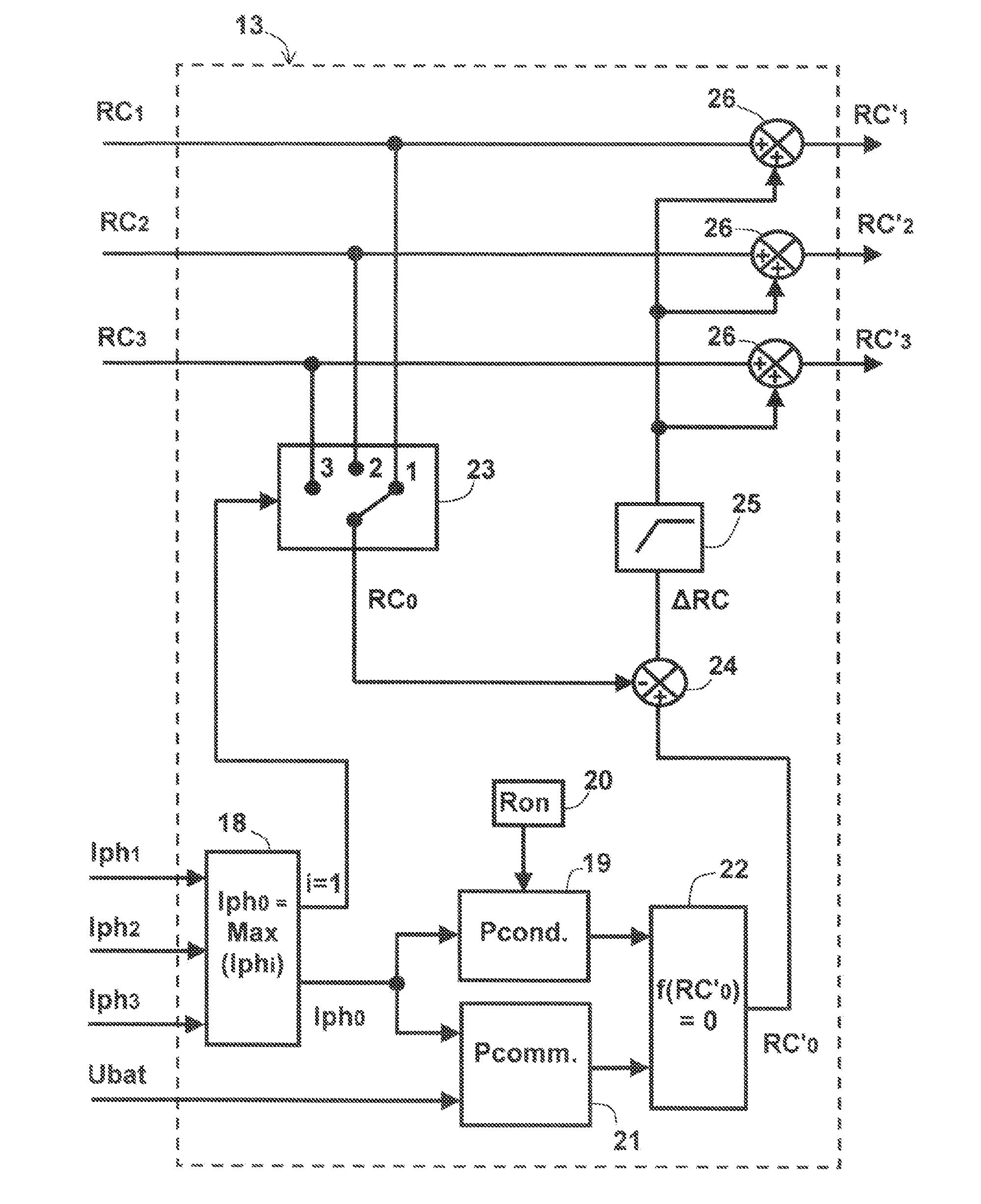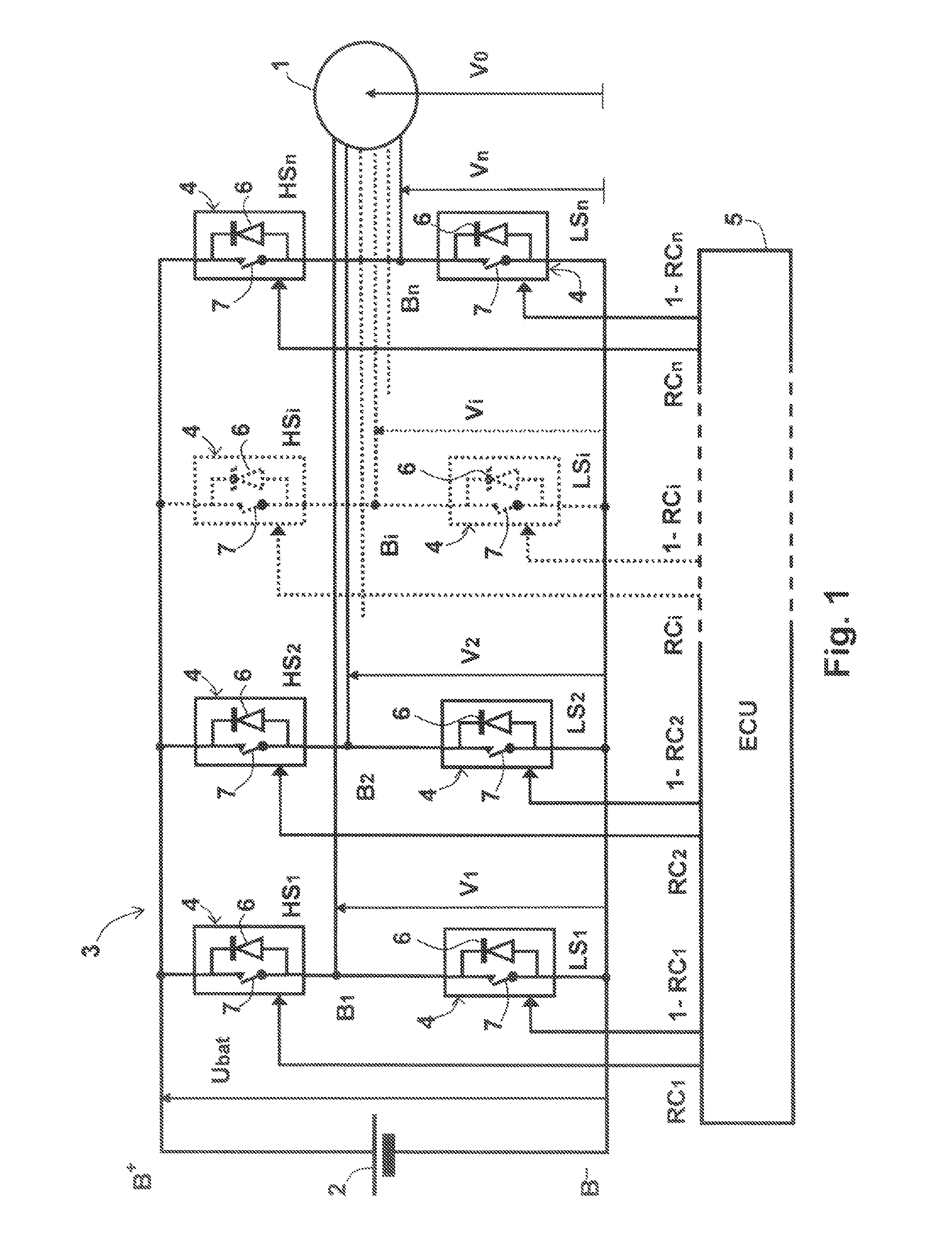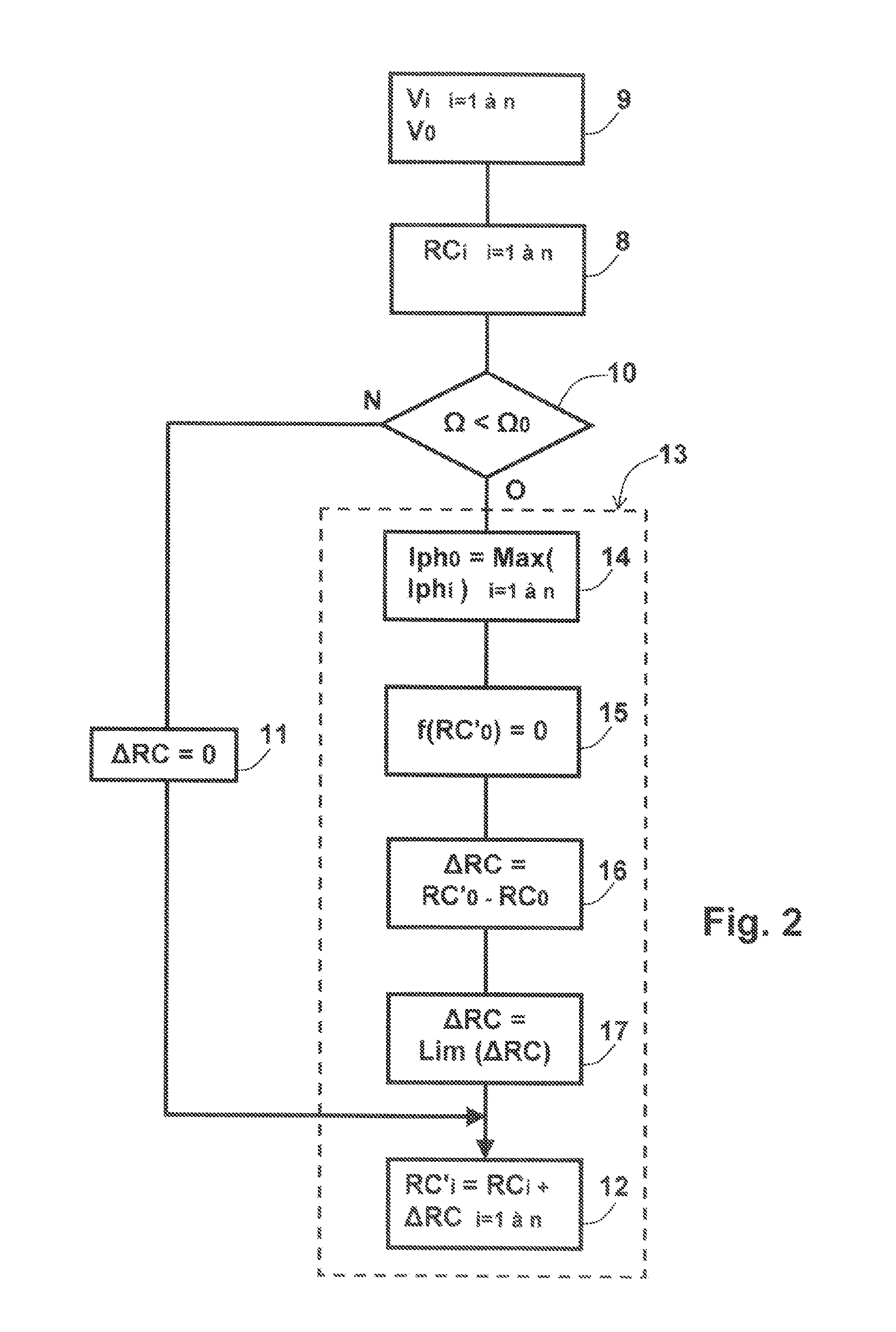Method for controlling a power bridge, and corresponding control device, power bridge and rotary electric machine system
- Summary
- Abstract
- Description
- Claims
- Application Information
AI Technical Summary
Benefits of technology
Problems solved by technology
Method used
Image
Examples
example 1
[0054]A system 1, 2, 3, 4, 5 comprises a battery 2 with a voltage Ubat of 100 V, and a three-phase machine 1, the rotor of which is blocked.
[0055]The electronic control unit 5 generates three set duty cycles:
RC1=0.60 RC2=0.45 RC3=0.45
[0056]which produces three set phase voltages (relative to the earthing terminal B−):
V1=60V V2=45 V V3=45V
[0057]The common mode voltage V0 is (V1+V2+V3) / 3=50 V
[0058]The voltages applied to the phase windings are:
V1-V2=15 V V2-V3=0 V V3-V1=−15 V
[0059]which generates the phase intensities (in arbitrary units):
Iph1=+1 Iph2=−½ Iph3=−½
The losses in the upper MOSFET HS1 of the arm B1 are:
conduction losses: Pcond.=RC1*Ron*IPh12
switching losses: Pcomm.=⅓*Ron*Iph12 (by simplification).
[0060]The total losses in the upper MOSFET HS1 are therefore:
Pcond.+Pcomm.=(RC1+⅓)*Ron*Iph12, i.e. 0.93*Ron.
[0061]The losses in the lower MOSFET LS1 of the arm B1 are only the conduction losses, since the switching losses have already been withstood by the upper MOSFET
[0062]The to...
example 2
[0064]The strategy of decreasing the losses by limited the number of switching operations implies blocking the arm where the phase intensity is greatest, and in this case the arm B1.
[0065]For this purpose, the set duty cycle RC1 becomes an optimised duty cycle RCop1, such that RCop1=1.
[0066]The two other set duty cycles RC2 and RC3 are increased by RCop1−RC1 in order to maintain the same voltage differences between phases, by increasing the common mode voltage:
RCop1=1 RCop2=0.85 RCop3=0.85
Vop1=100 V Vop2=85 V Vop3=85 V
[0067]The optimised common mode voltage is Vop0=90 V.
[0068]The machine 1 still has the same phase voltages:
Vop1−Vop2=15 V Vop2−Vop3=0 V Vop3−Vop1=−15 V
[0069]In this case, the losses are only conduction losses, since the arm B1 no longer switches. The total losses are therefore:
Pcond.=RCop1*Ron*Iph12 i.e. Ron
[0070]The losses in the upper MOSFET HS1 derived form the known strategy of minimisation are therefore in fact 7% higher than those derived from PWM control withou...
PUM
 Login to View More
Login to View More Abstract
Description
Claims
Application Information
 Login to View More
Login to View More - R&D
- Intellectual Property
- Life Sciences
- Materials
- Tech Scout
- Unparalleled Data Quality
- Higher Quality Content
- 60% Fewer Hallucinations
Browse by: Latest US Patents, China's latest patents, Technical Efficacy Thesaurus, Application Domain, Technology Topic, Popular Technical Reports.
© 2025 PatSnap. All rights reserved.Legal|Privacy policy|Modern Slavery Act Transparency Statement|Sitemap|About US| Contact US: help@patsnap.com



